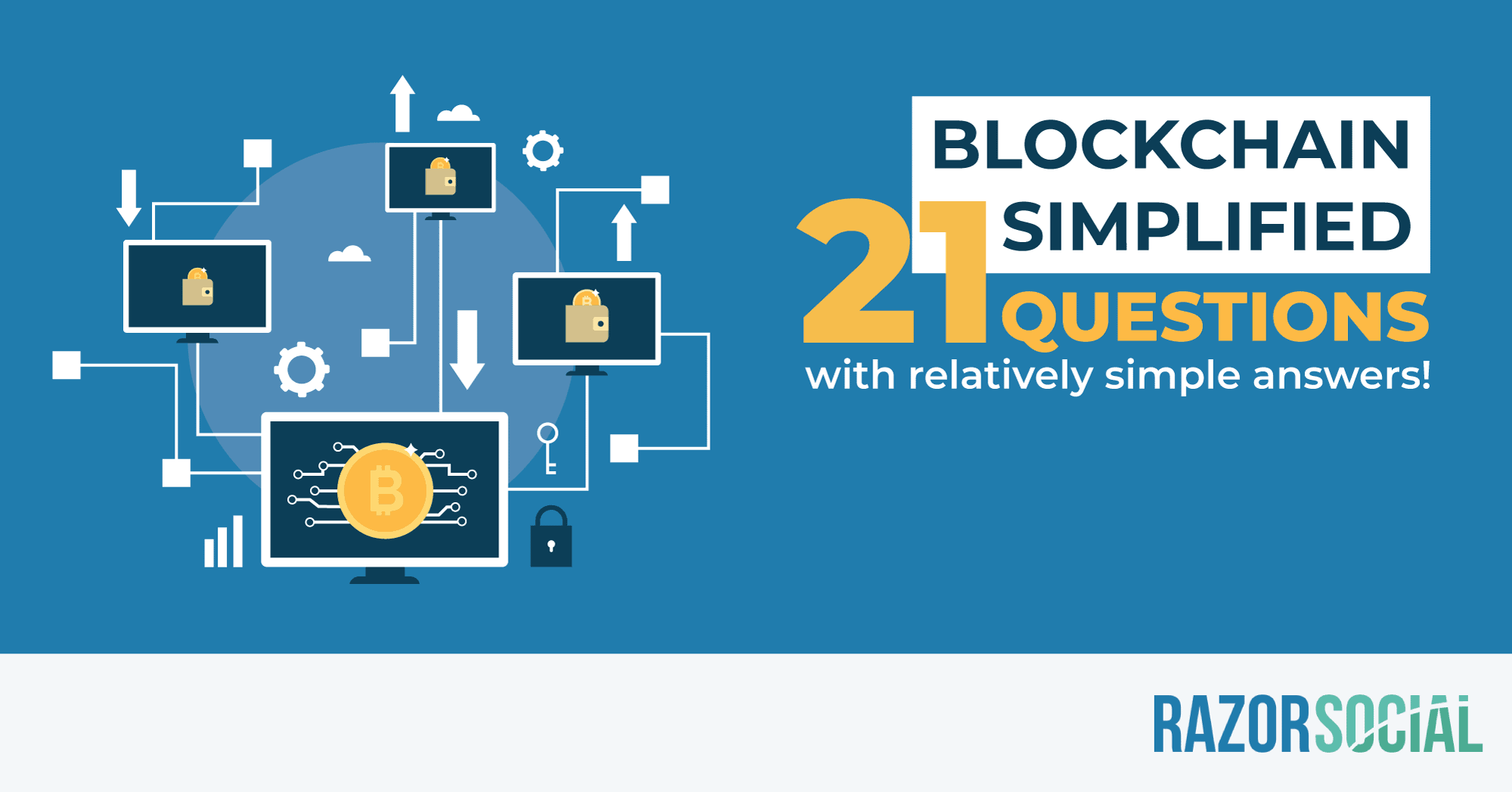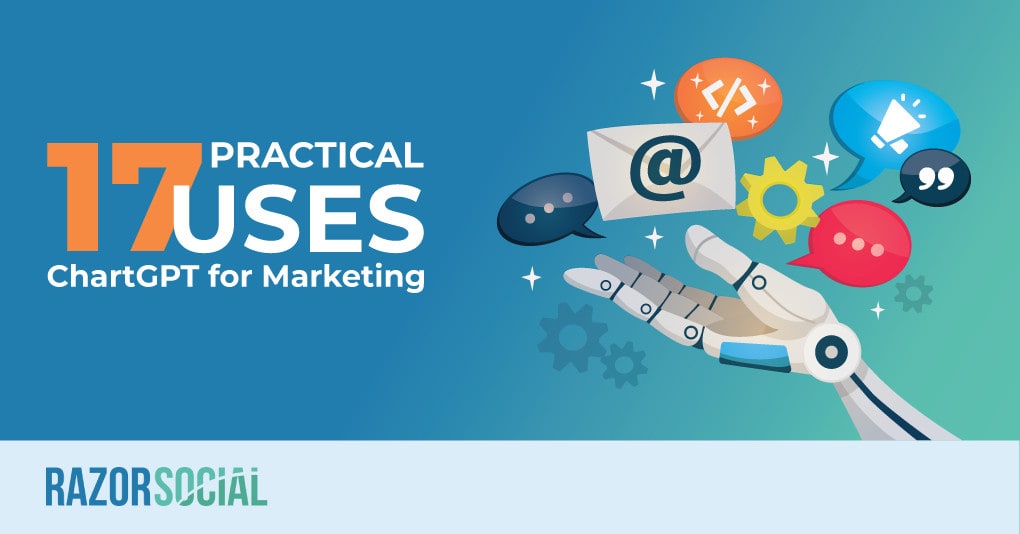
What happens next?
What’s your conversion process?
What are some of the components you need to have in place if you want to generate sales from these visitors?
There are many moving parts, depending on the complexity of your funnel, but let’s cover some of the most important elements.
What is an Online Sales Funnel?
An online sales funnel encompasses all the stages involved in going from attracting an audience to generating a sale.
You attract people to your website but not all of them will be interested in your products and services.
Out of the group that is interested in your products and services, only some will buy!
As you move down through the funnel, you find your buyers!
Here is an example sales funnel:

Entice – You entice people into your funnel with great content. For example, you create great blog content. As this stage, you’re trying to entice as many people as possible who are relevant. Most people you attract will not be buyers – but some will!
Engage – Once you entice them in, you try to get them to take the next step and this is where you build engagement with them. For example, they may sign up as an email subscriber and you can then build an engagement series with them to build trust, authority and relationships.
Another way of engaging them and moving them onto a a faster track is seeing if they will buy a low-cost product to take that first step. This is not your real money earner but it’s a way to find the real buyers!
Sell – At the end of the day, we’re here to sell products and services, so you can disguise this all you want but it is about selling. They have stayed with you through your engagement series and may even have bought something from you. You are now ready to sell to them!
Support – Your existing buyers are people who will potentially generate you more sales (referrals) or buy more products from you in the future, so this is a crucial step to provide the necessary support to enable them to do this.
What are some of the typical components you will need to have in place?
1. Blog
Your blog is a place where you can educate and inform. Use the relevant tools and optimize your content correctly to attract more visitors.

Writing consistently high-quality content increases the number of people at the top of your funnel.
This is not about selling at this stage. It’s about targeting your potential audience with relevant content.
But make sure your content aligns to the needs of your target audience and to the products you are selling.
For a blog, you’re going to need a range of tools:
- A blogging platform.
- Various plugins to help with social sharing, SEO, form building, landing pages etc.
- Tools to help manage the blogging process (e.g. CoSchedule).
2. Optin Form – Subscribe to go to the next level
You share out amazing content to your blog and visitors arrive!
What’s next…?
70% are not coming back, so you’d better try to create some form of hook to keep them interested.
You could encourage them to buy a product, sign up for a free consultation, sign up for a webinar etc.
You’ll need some form of optin form for this. An optin form is where people can fill out their details (e.g. give you their email address and optin to get something free).
Here’s an example of an optin on the Quicksprout website:
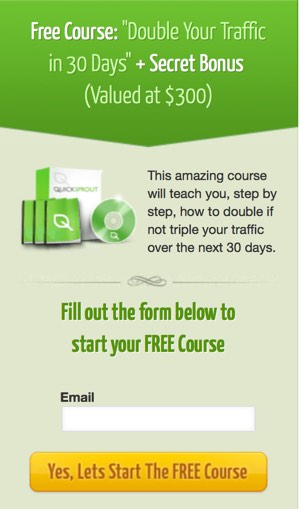
Why is this a good optin offer?
- It provides something of value
- The images shows it’s a product, and people like getting free products
- The headline gives a very specific benefit for them if they do the course
- The call to action tells them what’s going to happen when they click the button
- There’s a value of $300 on the course and you get it for free!
Typically, on websites, you might see optin forms in the sidebar, at the top of the screen, or as a pop-up.
With popups, you can set it to show up when a visitor has scrolled to a certain point on the page or when they have spent a certain amount of time on the website. This means they have shown they are interested in your content!
There are also popups that show up when a person shows ‘exit intent’, i.e. they are about to leave the website.
Here’s an example of an optin that pops up on the screen. If you use these with ‘exit intent’, this means that they will only appear when people go to leave your site, which is not as obtrusive.
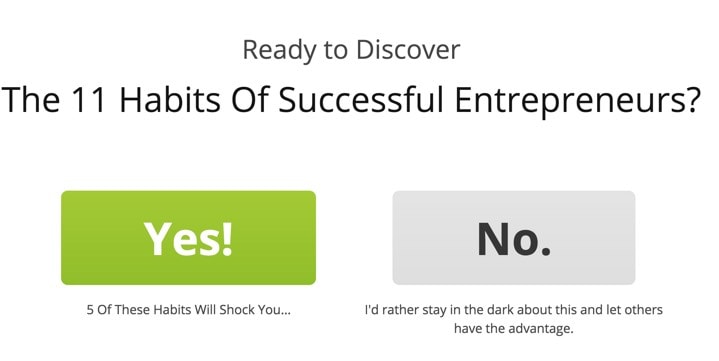
Why is this optin good?
1. It’s psychologically very powerful – who wants to ‘stay in the dark’?!
2. There are only two options and we all much prefer to click a positive option.
3. ‘Yes’ is highlighted and stands out more.
You may also need to create some imagery for your optin to make it look good. Use a tool such as Canva to create the imagery.
3. Email Automated Sequences
When someone signs up to your optin, you’ll want to initially send them a welcome email.
You’ll also want to have a series of automated emails that share some of your best content and help people understand why you are an authority in your niche.
As this trust is built up, it’s going to be easier to generate sales.
For automated email sequences, you’ve got a choice between an email marketing tool or a marketing automation tool.
The marketing automation tool typically is a lot more expensive, but it has more advanced automation features that may not be available with an email tool.
4. Landing Pages
As well as optins on your blog posts and other content (e.g. your ‘about’ page), you’ll also need to create some landing pages.
A landing page is a page someone lands on! It’s set up to achieve high conversion rates as the page is only focussed on one thing… getting that conversion.
To build a landing page, you’ll need to use software such as Leadpages or Unbounce.
Here’s an example landing page that is very focussed on one thing!
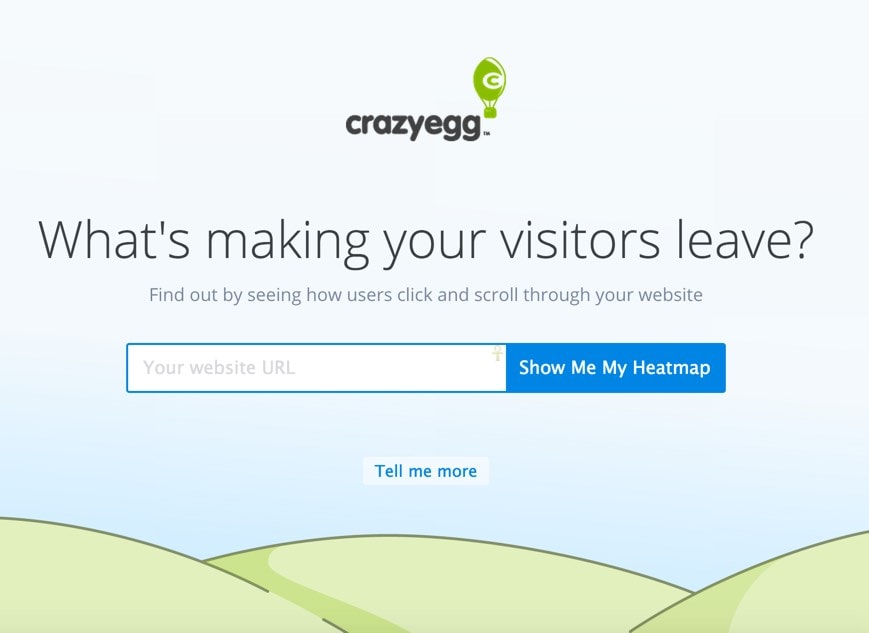
Once you have entered your website address, you have started a process you are likely to continue with.
You are brought to a series of stages that entice you in, engage with you, get you to buy etc.
When you buy, you could be offered another product, too, as an ‘upsell’.
5. Payment Gateway
If you are selling any products directly on your site, using a product sales page or as part of your funnel, you’ll need to set up a payment gateway to accept payments on your behalf.
There are many options available. We use the following:
Stripe – Stripe was developed by two Irish guys so that’s why we use them… no seriously, it’s a very simple system to get up and running and it works great.
PayPal – PayPal is also simple to set up and it’s good to give people a choice, so having PayPal is useful.
6. Tracking and Analytics
When you have your funnels set up, you’ll want to start monitoring and tracking what’s working and not working. Here’s some ideas:
a) Optins – Your options should be linked back to your email marketing tool so you’ll be able to track what percentage of people visit your page’s optin.
If you are using images to the side of your blog content, you’ll probably end up with 1 to 2% conversion starting off and then you can optimize this. If you are using popups, that can give you higher conversion rates.
If you use OptinMonster for your popup, this provides really good stats e.g. impressions, conversions. It also provides split-testing options.
b) Landing pages – If you use tools such as LeadPages, this will show you the volume of people landing on the page and the number of conversions based on this.
c) Sales – To track sales, you can look at your bank account! Or you can send people to specific pages after they buy. Once they land on this page, you know they have spent x amount of money.
Through tools such as Google Analytics, you can set up sales goals and track how many people visit a page, where they originate from and what they buy. I think that’s another blog post!
Summary
When you do your content marketing and drive people back to your website, you want to find out who the people are who really need your help.
To get this right, there are a lot of spinning plates!
In this article, we covered just some of the things you need to consider.
What are your main challenges setting up sales funnels?
I’d love to hear from you!


